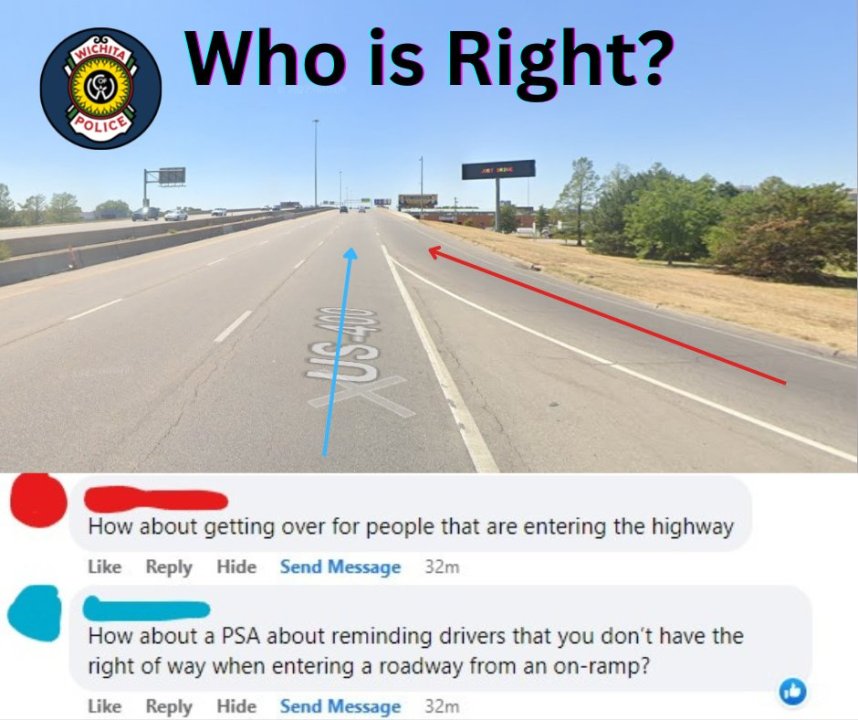DENVER (KDVR) — Picture this: You’re driving on the highway and someone is merging into traffic and trying to get into your lane. Should you slow down and let them in, or should they adjust to traffic and enter when it is safe to do so?
The Wichita, Kansas Police Department created quite a conversation when they asked about this scenario.
The Wichita Police Department asked, “Who is right?” in a photo with a blue arrow depicting regular traffic and a red arrow depicting traffic merging onto the highway.

“While it is certainly courteous driving for the blue car to move over if able to do so safely, the red car is the one required to adjust to traffic and merge when able,” the Wichita Police Department said.
Over 12,000 people responded in the comments section of the photo.
“The actual problem is that ALL of the traffic on the highway is following too closely and there is not enough space for anyone to actually merge, even when they have used the on-ramp/acceleration lane/etc. correctly. No, the blue car should NOT move over, but it ABSOLUTELY should already be driving far enough behind the car in front of it, that someone properly merging shouldn’t have to feel as though they must shove their way into traffic or stop in order to avoid an accident,” Tom explained on Facebook.
“So, if I’m in the right lane and I see cars trying to merge, I absolutely will get over to allow them if it’s safe for me to switch lanes. That’s just being courteous. By law, I wouldn’t have to and the ramp would have to yield. But a little bit of niceness never really hurt anybody, which is why I’d get out of the right lane to let them on safely and keep the flow of the road going,” Anna responded on Facebook.
“‘If you’re merging onto the highway, it’s not my responsibility to slow down and make a hole, it’s your responsibility to speed up and find one!’ I heard that in a comedy bit once, and it stuck with me. It’s an acceleration lane, people! (safely, of course),” Brian explained on Facebook.
Ways to merge safely
State Farm said that travelers can drive defensively and take precautions to prevent merging collisions.
“It’s not a good idea to make assumptions about what other drivers will or won’t do. Those assumptions might cause a driver to be caught off guard when the unexpected happens. Drivers who are entering, exiting or changing lanes on busy roadways should never assume other motorists will make room for them to merge,” State Farm explained.
Here are some tips for merging safely from State Farm:
- Adjust your speed to match the flow of traffic before entering the roadway
- Yield to drivers on the freeway, but avoid stopping unless absolutely necessary
- Find a three to four-second gap in traffic to merge, and be looking for the vehicle you want to be behind
- Check for cars around your vehicle before entering a lane, and remember to check your blind spot. Your mirrors will only reflect where they are aimed, so be sure to actually turn your head to see if the way is clear.
- Use your turn signals early, a recommended 100 to 300 feet before merging or changing lanes
- Wait for the solid line to end before merging. A solid line indicates that lane changes are prohibited.
- Cross one lane of traffic at a time
According to the 2022 INRIX global traffic scorecard, drivers in the United States lost an average of 51 hours over the year due to traffic congestion.
